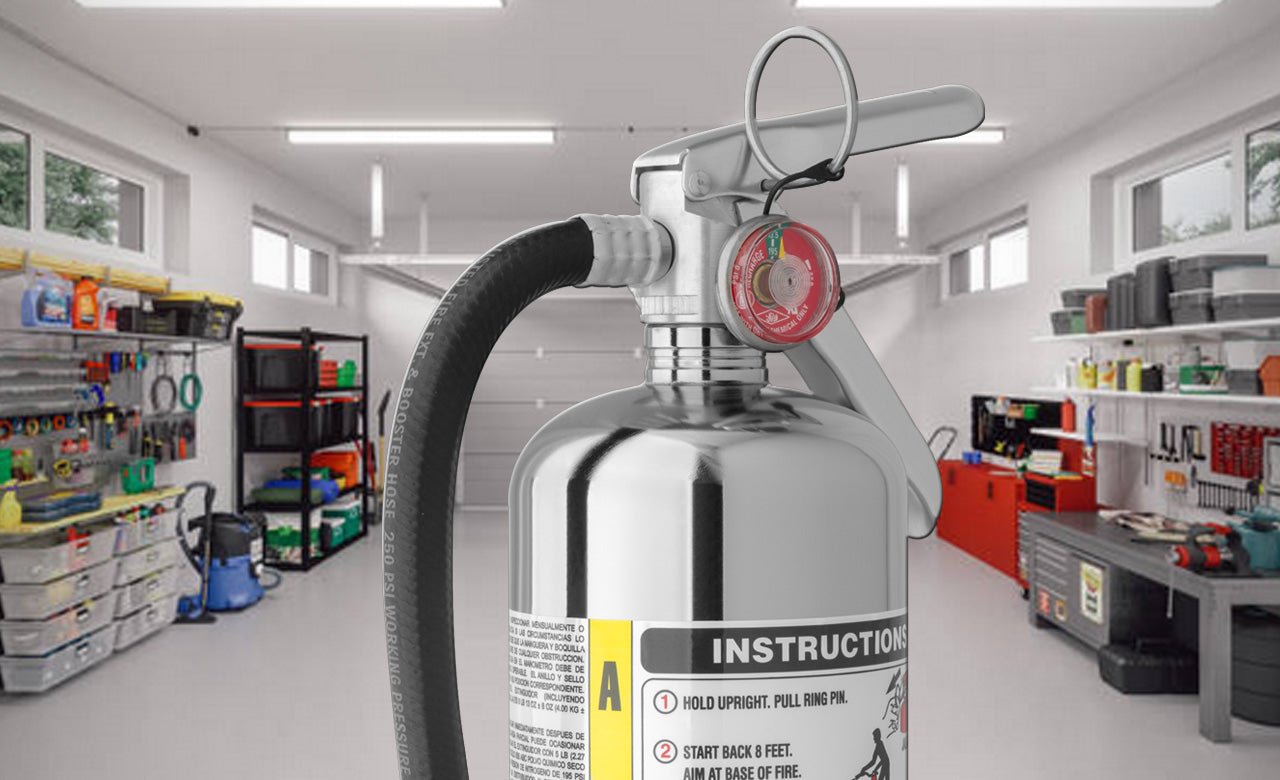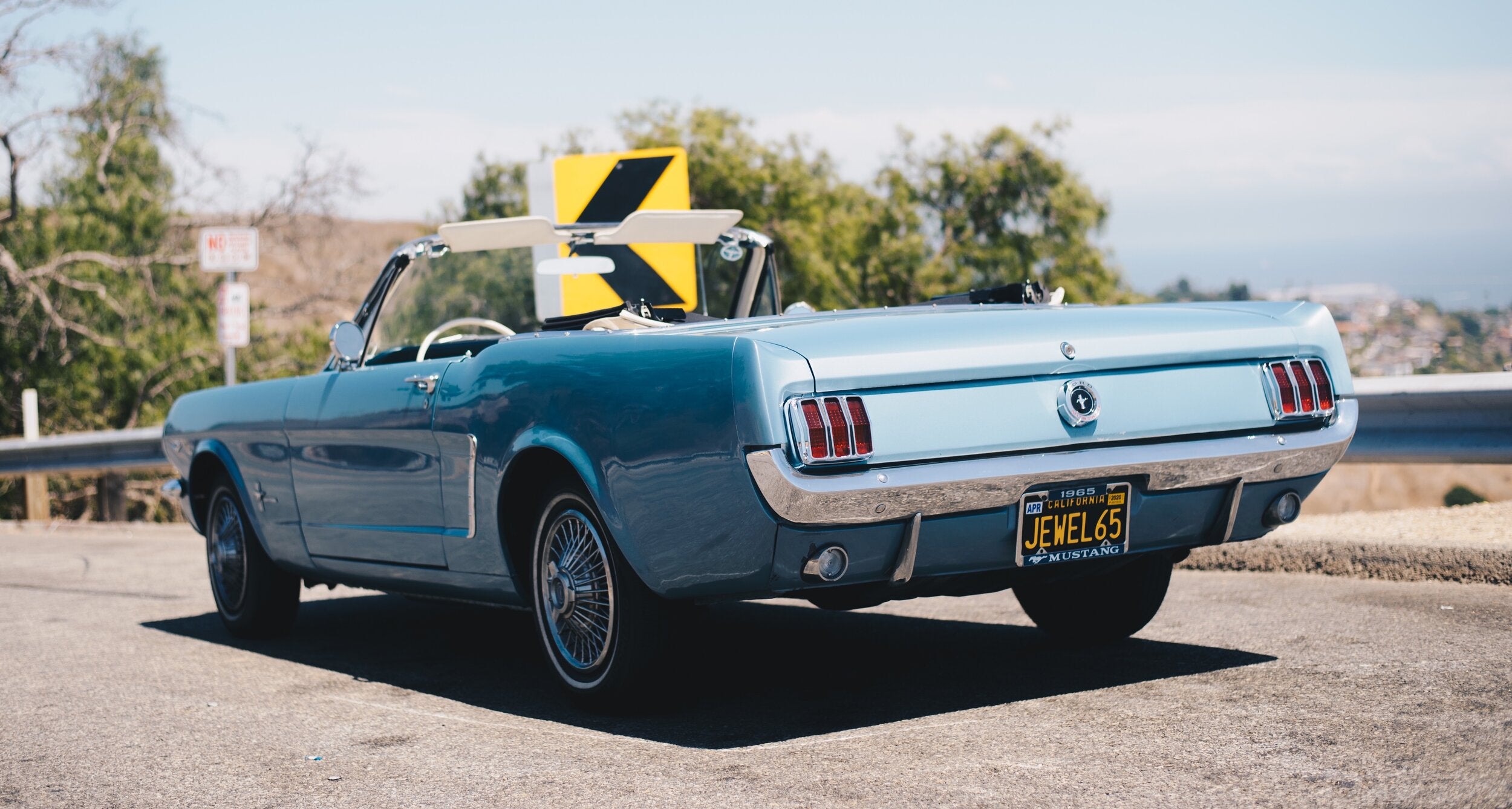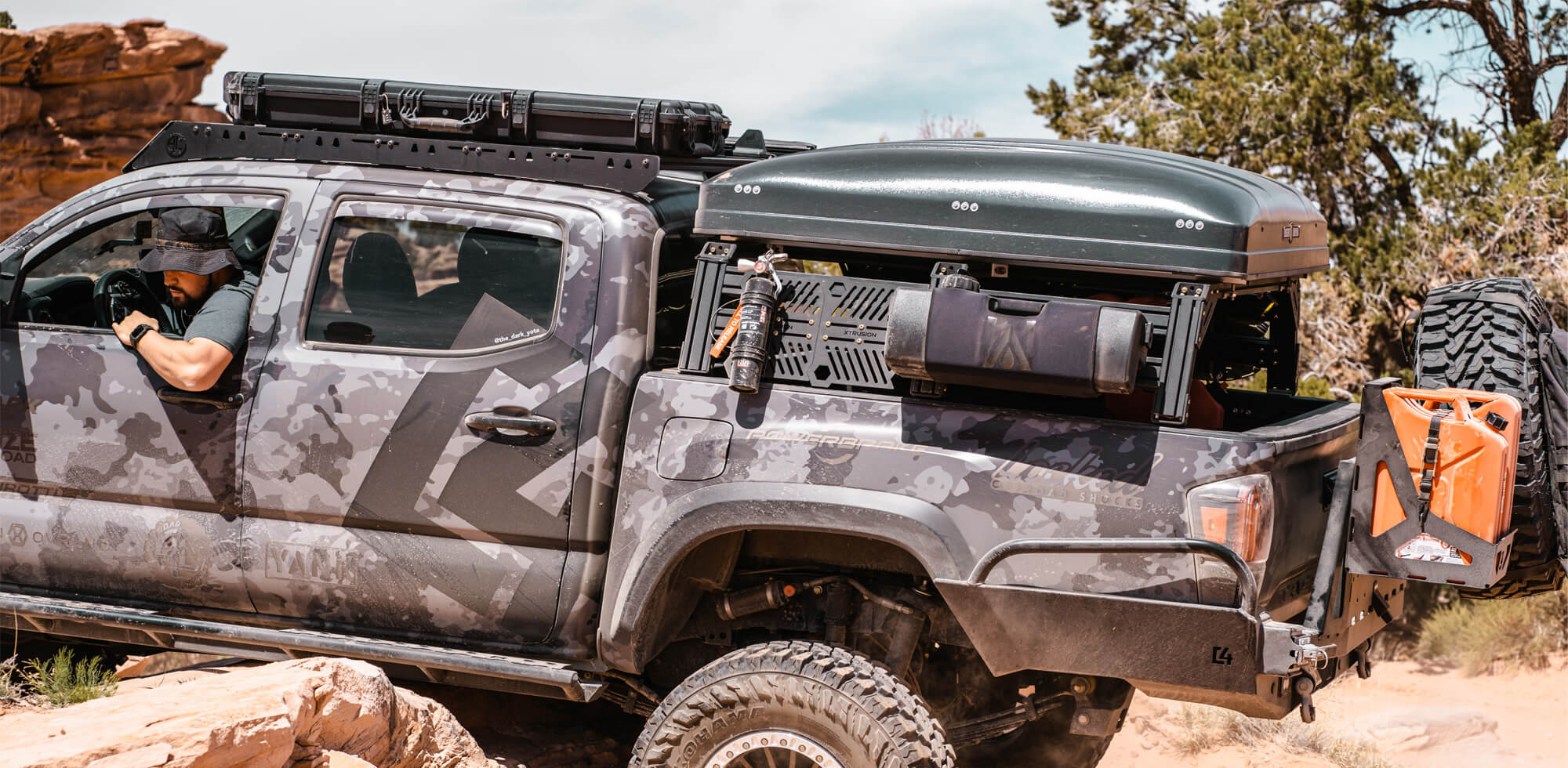There are a lot of myths and misconceptions about fire extinguishers. In this article, we debunk some of the most common fire extinguisher myths. This way, you’ll have a better idea of what fire extinguisher to buy, and what to avoid. And, you’ll be better prepared when a fire strikes.
Myth 1. Fire Extinguishers Can Explode In a Hot Car

Can a fire extinguisher explode if you leave it in your car in the hot sun all day?
The short answer is, no need for worry with a UL listed fire extinguisher. We’ve sold hundreds of thousands of UL listed fire extinguishers and have never heard of one of them exploding. Underwriters Laboratories (UL) listed fire extinguishers meet rigorous testing standards.
All H3R Performance fire extinguishers meet or exceed UL standards:
- We use high strength steel cylinders and all metal valve components.
- We design and manufacture our fire extinguishers to withstand extreme pressures and high temperatures.
- We verify quality, pressure testing to failure one out of every 1,000 cylinders.
In fact, H3R Performance fire extinguishers have all passed a "High Temperature Exposure Test." In this UL test, our fire extinguishers go into a 175°F testing chamber for a full 7 days. The extinguishers are then removed and checked. This way, Underwriters Laboratories can verify that our fire extinguishers withstand high temperatures with no loss of function.
What About Fire Extinguishers That Aren't UL Listed?
Without the UL rating, it's hard to know what could happen. This is why we don't recommend buying a fire extinguisher that is not UL rated. But don’t take our word for it. Ask your local State Fire Marshal’s office.
Finally, we should say that we're big fans of keeping a fire extinguisher in your car at all times. There are several great reasons to carry a fire extinguisher in your car, and we encourage all vehicle owners to have one.
Myth 2. Fire Extinguishers Shouldn’t Be Left Outside

Image Credit: TheLoneJeeper
If you leave a fire extinguisher outside, will it fail?
If a fire extinguisher is stored outside, weather and the elements will cause wear and tear. However, as long as the fire extinguisher is inspected and maintained per the instructions, you can expect it to work when you need it.
All H3R Performance fire extinguishers are tested for indoor and outdoor use. We build our extinguishers to last, and as a result we can warranty them for six years.
Myth 3. Fire Extinguishers Cannot Be Recharged

There are two common types of fire extinguishers - rechargeable and disposable.
A high quality UL listed fire extinguisher is very likely rechargeable. The extinguisher label will indicate if it is rechargeable or not.
If you have to choose between a rechargeable or disposable extinguisher, you want one that is rechargeable. Disposable extinguishers often aren't as high quality as rechargeable fire extinguishers.
Of course, every H3R Performance fire extinguisher is rechargeable.
How Are Fire Extinguishers Recharged?
Recharging a fire extinguisher is not a DIY project, but getting it done is usually pretty easy. You need to find your local certified fire service company and pay them to recharge your fire extinguisher. As part of the recharge process, your fire extinguisher will be tested and inspected. If there's any evidence of corrosion, the extinguisher will need to be replaced.
Myth 4. Fire Extinguisher Discharge Times Are Related To Size

Some people say that bigger fire extinguishers discharge longer than smaller fire extinguishers. However, a fire extinguisher's discharge time is based on it's design, not just its size.
Fire extinguisher discharge time is based on nozzle design and operating pressure, more than its size and the amount of agent it contains. At H3R Performance, fire extinguisher discharge time is optimized for a specific use. All our fire extinguishers have at least ten seconds of discharge time, and many of them have longer discharge times.
So even though our MaxOut MX100 and MaxOut MX250 fire extinguishers are different sizes (1lb. vs 2.5lb), they both have a 10 second discharge time. The size of the extinguisher doesn't by itself indicate a longer discharge time.
Myth 5. You Must Shake A Fire Extinguisher At Least Once A Year

Some people think that fire extinguishers need to be shaken every year or every month. The idea is that the powder-like extinguishing agent inside will “brick up” if the extinguisher isn't shaken.
While it might be fun, there is no need to shake any H3R Performance fire extinguisher, or any other UL listed fire extinguisher. All UL listed dry chemical fire extinguishers are designed so they will not “brick-up.” And our MaxOut dry chemical fire extinguishers have non-caking additives to ensure they flow freely.
So, basically, you should only shake our fire extinguishers if you really want to!
Myth 6. Long Discharge Times are Best

Some non-UL listed fire extinguisher companies emphasize long discharge times. They'll even suggest that a 50 second discharge time is better than a 10 second discharge time.
The problem is that you can't talk about fire extinguisher discharge time without also talking about size and pressure. Fire extinguisher effectiveness is based on several factors, including:
- How much extinguishing agent it has
- Operating pressure
- Discharge time
- Extinguishing agent type
If you were at a car show and someone said "superchargers are better than turbochargers," you'd point out that this is sometimes true, but not always. The same is true of fire extinguisher discharge time - sometimes longer is better, and sometimes it isn't.
All H3R Performance fire extinguishers are UL listed and rated for specific types and sizes of fires. The discharge flow rate, distance, and time are optimized for maximum fire-fighting effectiveness. You can rest assured our fire extinguishers do the job they were designed to do.
Myth 7. A Low or High Reading On A Fire Extinguisher Pressure Gauge Is a Problem

Image Credit: TheLoneJeeper
If a fire extinguisher pressure gauge reads outside of the green zone, some people say it is not working properly.
However, the green zone on the pressure gauge is only applicable at room temperature. Just like the tires on your vehicle, the pressure inside your fire extinguisher will change based on how hot or cold it is outside. At lower temperatures, the pressure inside the fire extinguisher will be lower. And vice versa.
Having said all of that, if your fire extinguisher is at room temperature and the pressure gauge reads high or low, it's a good idea to have it serviced. You can bring any UL listed fire extinguisher to your local fire service company for inspection and recharge (when needed).
More Myths To Come!
When it comes to fire extinguisher myths, we've just scratched the surface. But we hope this article helps a few people make the best decision when it comes to installing a fire extinguisher in their vehicle.
Also, if you have a question about fire extinguishers you'd like us to address in a future article, please let us know.





